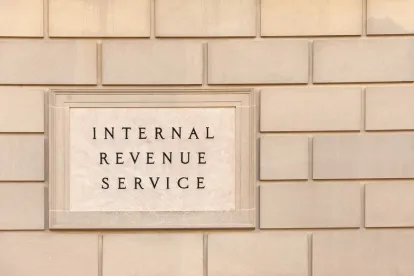On May 3, 2019, the Internal Revenue Service released Private Letter Ruling 201918008. The IRS concluded
in that PLR that an issuer of exempt facility bonds used a reasonable method, under all the facts and circumstances, to determine whether the term of an operating agreement entered into with a private party exceeded 80% of the weighted average economic life of the bond-financed assets that are subject to that agreement. This PLR could have utility for certain exempt facility bonds and beyond.[1] For more detail, read on.
A private activity bond cannot be issued on a tax-exempt basis unless it is a “qualified” private activity bond. Exempt facility bonds, which can be issued to finance airports, docks and wharves, solid waste disposal facilities, and qualified residential rental projects, among many other things, are qualified private activity bonds that can be issued as tax-exempt bonds. Bonds issued for airports, docks and wharves, mass commuting facilities, and environmental enhancements of hydroelectric generating facilities can, however, qualify as exempt facility bonds only if a state or local governmental unit owns the assets financed by the bond issue.
For purposes of determining whether a governmental unit owns bond-financed property that the unit leases or otherwise makes available to a private party, a statutory safe harbor (“Safe Harbor”) treats the governmental unit as the owner of bond-financed property if, among other things, the term of the agreement does not exceed 80% of the reasonably expected economic life (as determined under Internal Revenue Code Section 147(b)) of the bond-financed property that is subject to the lease.
This is where PLR 201918008 comes in. An issuer of exempt facility bonds for docks and wharves wanted to extend the terms of various agreements it had with a private party to operate the dock facilities, which included assets financed or refinanced by different issues of exempt facility bonds. The issuer requested a ruling from the IRS that, under the following methodology, the extended terms of the operating agreements would satisfy the Safe Harbor.
First(ly), the reasonably expected economic life of the bond-financed assets would be determined as of the effective date of the amended operating agreements and not, as set forth in Code Section 147(b)(3)(A), the date of issuance of the exempt facility bonds or the date on which the bond-financed asset was placed in service (whichever was later). Second(ly), in the case of bond-financed assets that comprise components or improvements of a larger asset, the economic life of the bond-financed components/improvements would be determined based on the economic life of the larger, improved asset. Final(ly), the weighted average economic life calculation would use the original amount of bond proceeds allocated to the bond-financed asset, not a lower amount of bond proceeds to reflect amortization (or refunding) of bond principal. The IRS concluded that this methodology was reasonable under the facts and circumstances, which allowed the extended terms of the operating agreements to satisfy the Safe Harbor.
PLR 201918008 provides very helpful guidance for determining compliance with the Safe Harbor.[2] Under this PLR, the term of a lease of bond-financed property isn’t moored to the reasonably expected economic life of that property as of the date the property was placed in service or the date the bonds that financed that property were issued (whichever is later). Instead, an engineering report could be obtained to establish the reasonably expected economic life of the property as of the date of the lease agreement. This report could take into account improvements made to the property after it was placed in service, something that cannot be done if the reasonably expected economic life is determined as of the property’s placed-in-service date. Even more remarkably, the PLR allows the determination of economic life to be based on the economic life of the larger, improved asset of which the bond-financed property is a constituent part. The economic life of the larger asset will in many cases be longer than the separate economic lives of its components.
As helpful as PLR 201918008 is for purposes of the Safe Harbor,[3] it would be a somewhat provincial ruling if its scope could not extend beyond the categories of exempt facility bonds that require ownership of the bond-financed assets by a state or local governmental unit. It’s worth noting that the portion of the Safe Harbor that pertains to the term of a lease agreement is mirrored in Revenue Procedure 2017-13, which provides a safe harbor under which management contracts will not result in private business use of the bond-financed property that is subject to the management contract. One element of the Rev. Proc. 2017-13 safe harbor is that the term of the management contract cannot exceed the lesser of 30 years or 80% of the weighted average reasonably expected economic life (as determined under Internal Revenue Code Section 147(b)) of the managed property. Sound familiar? The potential application of PLR 201918008 to the analysis of whether a management contract satisfies the Rev. Proc. 2017-13 safe harbor from private business use could prove most beneficial in the case of management contracts that are part of public-private partnerships – arrangements that in no small part motivated the promulgation of Rev. Proc. 2017-13.[4]
[1] Internal Code Section 6110(k)(3) provides that a private letter ruling cannot be used or cited as precedent unless regulations to the contrary are issued. Nonetheless, the U.S. Supreme Court has held that private letter rulings “reveal the interpretation put upon the statute by the agency charged with the responsibility of administering the revenue laws,” and such rulings aid in the interpretation of the internal revenue laws. Hanover Bank v. Comm’r, 369 U.S. 672, 686-87 (1962). See also Rowan Cos. Inc. v. United States, 452 U.S. 247, 261 n.17 (1981). Moreover, the Tax Court has found that private letter rulings may be cited to show the practice of the IRS. Rauenhorst v. Comm’r, 119 T.C. 157, n.8 (2002); Estate of Cristofani v. Comm’r, 97 T.C. 74, 84 n.5 (1991); and Woods Inv. Co. v. Comm’r, 85 T.C. 274, 281 n.15 (1985).
[2] Supra footnote 1.
[3] Supra footnote 1.
[4] Supra footnote 1.




 />i
/>i

